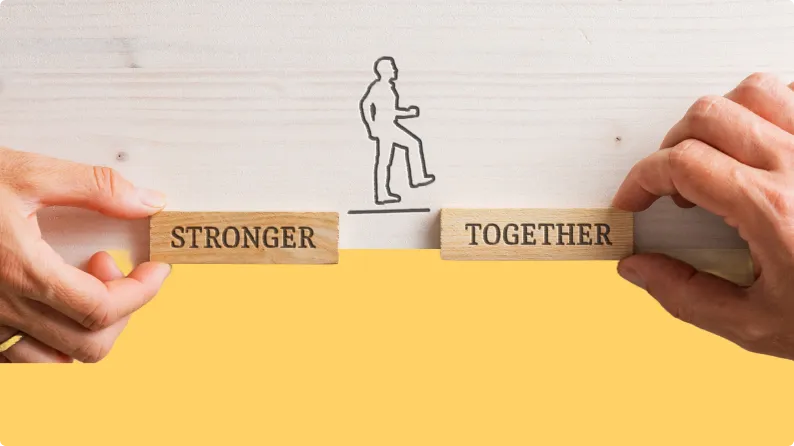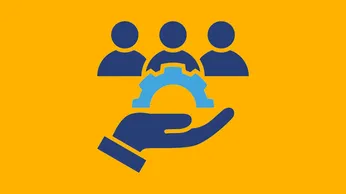Customer Loyalty Program: A Guide to Building Lasting Relationships
Want to build stronger relationships with your customers? Explore this comprehensive guide to customer loyalty programs, from points and tiers to gamification and rewards. Learn strategies that boost retention, referrals, and long-term brand love.
On this page
Customer loyalty programs play a vital role in driving retention, which is often more cost-effective than acquiring new customers. Despite this, many companies still prioritize acquisition over retention.
Building effective loyalty programs is no longer optional, it's essential for long-term business success.
In this article, we’ll walk you through how to create a customer loyalty program, share real-world case studies that highlight their growing importance, and explore how Loyalife helps scale meaningful, reward-driven programs.
What is a customer loyalty program?
According to Salesforce, a customer loyalty program is a well-structured marketing strategy that a brand implements to get customers (associated with the program) to continue to use their products or services for added benefits in return.
Customer loyalty programs aim to reward those who engage with or purchase from a brand frequently. Brands can offer points, perks, or tiered benefits that increase with continued purchases—ranging from discounts and freebies to exclusive promotions.
These programs are now common across industries like banking, hospitality, retail, travel, and e-commerce. At their core, they nurture an emotional bond between the brand and customer. Loyal customers often choose you over better deals elsewhere—and rewarding that trust is what loyalty programs are all about.
How do customer loyalty programs work?
Customer loyalty programs simply work because people love to be loyal subconsciously. When such a customer is offered rewards for purchasing products from a brand on a recurring basis, he or she gets incentivized, feels special, and probably deletes competitor apps as well.
With that said, the incentives offered must carry strong benefits to keep loyal customers tuned in.
Loyalty is the byproduct of customers’ positive experience with a brand and works further to build trust.
Loyalty programs have several goals: increase business, improve sales, strengthen the relationship between the customers and the business, and keep the customers coming back on a regular basis.
One important element of meeting these goals is ensuring the program has a benefit to the customer. If the rewards of the program are unattractive or uninteresting to the customers, the program may see little success. However, if the benefits are enticing, the program can help increase sales and encourage customers to return for their next purchase.
Why are customer loyalty programs important?
All businesses can benefit from building a customer loyalty program and rewarding customers with additional, exclusive benefits.
In an increasingly competitive and crowded market, loyalty programs can differentiate you from your competitors and keep your customers around. I’m way more likely to shop at a store or visit a restaurant again if I know I’m getting a deal.
Here are a few reasons why customer loyalty programs are important:
1. Better customer retention
Shoppers today are loyal to more than just price tags — they seek brands that resonate with their values and offer consistent engagement.
Merkle’s 2024 report shows that a solid customer loyalty program has an 84% impact on a consumer’s decision to keep doing business with a brand.
A well-crafted loyalty program keeps customers engaged beyond transactions. Whether you’re offering points for purchases, exclusive offers, or values-based rewards, you're reinforcing emotional connections that increase retention.
Even service businesses can benefit. For example, home maintenance companies can offer recurring service plans, encouraging consistent engagement and long-term relationships.
2. More customer referrals
If your customers enjoy the benefits of your customer loyalty program, they’ll tell their friends and family about it. This word-of-mouth marketing draws in new customers at no acquisition cost and can generate even more revenue for your business.
3. Cost-efficacy
Acquiring new customers is expensive, retaining existing ones isn’t. A well-designed loyalty program not only brings customers back but also increases their lifetime value, making it a far more cost-effective strategy than constant acquisition campaigns.
Satisfied members of your program often become informal brand ambassadors, helping you scale through referrals and reducing reliance on costly marketing efforts.
4. User-generated content and reviews
Online reviews carry serious weight. In fact, they’re nearly as influential as personal recommendations. Loyalty programs that reward reviews, testimonials, and social sharing turn happy customers into content creators — spreading the word and boosting trust without you having to say a word.
Types of customer loyalty programs with examples
Over the years, these are the different tried and tested loyalty programs that have worked like a charm for many businesses across the world.
There are a handful of customer loyalty programs that are tried & tested to work efficiently as well as effortlessly. Not to mention, there are newer ideas that work just as well.
In the realm of loyalty programs, you can choose the program based on the industry, customer engagement, strong/weak suits of your company, and other criteria.
While most companies stick to one or two kinds of loyalty programs, many try a combination of more than two programs to appreciate and incentivize loyal customers.
Listed below are the most widely used loyalty programs:
1. Point programs
As the self-explanatory name suggests, a point program is when a company offers points for frequent purchases. Available both online websites and the app, customers can accumulate points for each purchase and redeem on a later date for a product or a significant discount.
One of the most widely used loyalty programs, the point program is known to gradually increase the average order value, and encourage customers to remain loyal to the brand.
- $20 Reward Dollars when you’re approved and spend $50+ using the temporary shopping pass provided.
- Earn $15 Reward Dollars after one purchase at Walmart and one anywhere else.
- Earn $10 Reward Dollars after signing up for paperless statements.
2. Spend-based loyalty program
As the name entails, a spend-based loyalty program allows customers to accumulate loyalty credits (in the form of stars or coins or stamps) based on their spends. This type of customer loyalty program is easy to create, understand, and maintain.
Mostly used to increase amounts whilst reducing churn rates, spend-based loyalty programs are easy to create, maintain, and understand as well. For instance, $10 = 1 loyalty star.
With Starbucks, you earn Stars for every activity that a customer does. The type of activity defines the ‘Stars’ that you can earn out of that program, which isa brilliant move from them because as a customer, you’ll always have an urge to earn extra points. With the average American adult spending $20 per month at coffee shops, customers can earn a lot of 'Stars' through their spend-based loyalty program.
This emotion is similar when you play a game. These stars then add up to their rewards program. So this way a customer is and will always want to be associated with the brand for longer.
3. Tiered programs
A program that encourages customers to ascend to higher levels of loyalty, tiered programs are used to bring about a balance between attainability & desirability.
With the freedom to earn more points with each purchase, customers generally tend to compete with themselves to attain a higher level in the tier. The said tier program is usually based on how frequently customers purchase from a brand, points they earn, and other engagement stats.
With Uber rewards, a customer is eligible for the 1st tier ‘Blue’ without points whereas the 2nd tier ‘Gold’ has decent benefits such as flexible cancellation, priority support, etc. and the 3rd tier ‘Platinum’ has some additions when compared to Gold. Finally, the highest tier ‘Diamond’ includes all types of desirable rewards like priority pickups at airports.
4. Paid programs
A loyalty program that allows brands to establish a strong relationship with current customers and also attract newer ones, paid programs to work better than you initially imagine.
A recurring membership fee is paid by the customer to the brand for which they receive perks and benefits. Benefits like early access, express delivery, goodies, 24/7 helpline, and others retain customers coaxing them to remain loyal to the brand.
At a price of $25 a year, Barnes & Noble provides exclusive store & online offers, free shipping, early access, 40% off of hardcover bestsellers, and the being one of the biggest retail outlets for books in the United States, the brand is setting wonderful precedence for others to follow.
5. Value-based programs
This is a tricky one. A loyalty program that rewards customers by not rewarding them directly, value-based programs appeal to the customers on a much deeper level. Collecting reward points like any other loyalty program, customers are then usually given a choice to donate the earned points to charities.
Brands choose if all the earned points can be donated or some of it, customers often love to be involved in charity work where they don’t directly spend their hard-earned money.
Brands often curate & customize the charities to appeal to the specific customer as opposed to lining up general charities. A rewards program that is known to build lasting relationships with customers, value-based programs also increase the loyalty index substantially.
6. Game programs
Spin-the-wheel, slot machines, and quick engaging games of all kinds are known for their game-based loyalty programs. Studied to have increased customer retention and loyalty significantly, these loyalty programs attract new customers, repeat customers, and daily users that make the most of the coupon codes by playing games.
The customers were asked to register after a few minutes of being engaged with the welcoming game, and this case study sets a great example of how to retain new customer attention & interaction.
7. Partnered programs
Regardless of the product or the services industry, partnered programs and collaboration are finding the impetus in the last few years. A cohesive collaborative effort where customers reap the benefits from more than one platform receives a resounding welcome, and companies of all sizes are making the most of it.
Finding a brand that is relatively connected to your own will do the trick but sometimes, polar opposite brands collaborate to bring out mind-blowing loyalty programs, making the industry’s head turn.
Also called a coalition loyalty program, the idea is ideal when you operate multiple endeavors and bring attention from one to the other.
Priceline has and is constantly collaborating with companies such as ‘Pet Circle’, ‘nib’, ‘Readly’, and many more to provide loyalty services that were unheard of before.
8. Hybrid loyalty programs
A hybrid loyalty program works vaguely similar to the partnered program but within the company. When two loyalty programs are combined to heighten the reward given to the customer, hybrid loyalty programs are born and these are known to work across industries of all verticals.
When increasing loyalty index from customers is on the mind, brands choose more than one program that works best for them.
For example, when fee-based programs are combined with tier loyalty programs, the outcome is often stupendous, likewise, VIP programs are named Bronze, Gold, Elite, Pro, etc, and added with gamification to encourage customer participation.
CVS ExtraCare is a free loyalty program that attracts customers to receive cashback, extra savings, and others, and this service is free to sign up for. Once the customer is signed up, CVS CarePass; which provides tremendous more value in the form of offers, comes into the picture.
A CVS CarePass member enjoys benefits such as fast delivery, free shipping, instant discounts, monthly rewards, and many more. CVS has calculated that an average CarePass member spends 3 to 4 times more while shopping as opposed to a person who isn’t a member. This clearly shows how effective this method loyalty reward program is.
How to create a customer loyalty program
Creating a customer loyalty program isn’t a walk in the park. It requires proper evaluation of key metrics. Let’s study in detail.
1. Create a loyalty program concept
Launching a successful customer loyalty program requires careful planning upfront. Just like any journey, it's crucial to have a roadmap in place to avoid surprises and roadblocks later on. Here's a breakdown of key aspects to consider during the program's concept stage:
- Geographic reach: With the help of the customer’s geographic location, your brand gets the freedom to design highly personalized engagement strategies. Determine the initial launch countries, along with supported languages and currencies. Consider if a global rollout or a single-country test market is best for your program.
- Program design: Establish the overall theme, program name, and loyalty currency (points, miles, etc.). Decide how points will be earned and redeemed, including the point value and tier requirements (if applicable). While these details can be adjusted later, initial planning keeps things on track.
- Channel integration: Outline the channels involved in the program, focusing on creating a seamless omnichannel experience for your customers. Specify which channels will be available at launch and if there are plans for future channel integration.
2. Program logic
Defining the program logic is essential for a smooth launch and ongoing program success. While the specific details will depend on the chosen program type (discussed later), here are some key areas to consider:
1. Point system design
- Point earning and redemption: Establish clear rules for how points are earned (e.g., purchases, reviews) and redeemed (e.g., rewards). This includes defining point values, rounding rules, and any point expiration policies.
- Assigning point value: Determine how many points are awarded for different actions, considering the value of those actions to your business. Similarly, assign point costs for desired rewards.
2. Tier structure
- Number of tiers: Decide how many tiers your program will have.
- Tier qualification: Establish whether tiers will be based on points earned or total spending. Define the point/spend thresholds for reaching each tier.
- Tier maintenance: Determine if tiers will expire and how members will be downgraded if they fall below tier requirements.
3. Provide multiple opportunities for customers to enroll
Once you‘ve launched your customer loyalty program, make sure you’re promoting the benefits of joining. If customers get rewards from purchasing from your online store, next to the price, share the points they could earn from spending that much.
I experience this when flying on Jet Blue, which offers a loyalty rewards credit card. The flight attendants always announce that I could earn 30,000 miles toward my next flight. All I have to do is apply for the airline's credit card.
Other ways to do this include promoting the program on social media channels and adding on-site push notifications when customers complete an activity that earns them points.
Feature potential points next to product prices on your website, use dynamic notifications during checkout, and employ strategic in-person pitches (similar to airline promotions). You can also implement in-app notifications or quick-response (QR) codes that lead to a loyalty program signup page.
4. Add engaging features
A loyalty program should not just reward purchases; it should create an emotional connection with your brand. Gamification adds a fun, interactive layer to the program, making it more appealing and exciting for customers. With tools like Loyalife, you can incorporate various engaging features, such as:
- Sweepstakes: Offer customers the chance to win exclusive rewards by participating in draws, adding an element of surprise and excitement.
- Auctions: Allow customers to use their loyalty points to bid on premium products or experiences, creating a sense of value and exclusivity.
- Challenges: Encourage customers to complete specific tasks, like trying a new product or engaging on social media, to earn additional points.
- Interactive campaigns: Use games or quizzes related to your brand to boost customer engagement and reinforce brand recognition.
- Personalized gamified experiences: Tailor these games to customer preferences, enhancing their emotional connection with your brand.
These features not only drive frequent engagement but also make the program more enjoyable, ensuring customers stay connected with your brand in meaningful ways.
5. Offer diverse rewards
To make your loyalty program truly impactful, offering a wide range of rewards is essential. Customers have varying preferences, so providing options ensures everyone finds value in participating. Loyalife's Global Rewards Marketplace is an excellent example, featuring over 10 million rewards across categories, such as:
- Travel perks: Redeem points for flights, hotel stays, or travel packages, appealing to customers who love exploring new destinations.
- Exclusive offers: Partner with top brands to provide discounts or access to limited-edition products and services.
- Unique experiences: Provide opportunities like concert tickets, spa treatments, or adventure activities, which create memorable moments for customers.
- Gift cards: Offer flexibility with gift cards for popular retailers, restaurants, and entertainment platforms.
- Merchandise: Include electronics, home goods, and other desirable products, ensuring something tangible for every type of customer.
A diverse rewards catalog demonstrates your commitment to customer satisfaction and makes the program more inclusive. It also keeps customers engaged, as they know their points can be redeemed for something valuable to them. When customers see they can earn meaningful rewards, they’re more likely to stay loyal and actively participate in your program.
6. Make it a game
Everyone loves games and competition — so use that winning spirit to get your customers to interact with your brand more frequently. Lots of brands gamify their customer loyalty programs to earn valuable engagements within an app, website, or at point-of-purchase.
Points are easily translatable for gamification. Take Treehouse for example, which teaches coding and app development. Treehouse rewards engaged users with more and more points leading up to a badge — which users can then display on their websites and social profiles to impress colleagues and potential employers with their skills.
If you're operating with a growing business, you may not have much flexibility when it comes to your budget. However, you can still offer an attractive rewards program that fosters customer loyalty.
7. User journey and reporting
A strong foundation is crucial, but a successful customer loyalty program hinges on creating smooth user journeys. Here's how to ensure your program fosters engagement:
- Effortless enrollment: Make signing up quick and easy. Focus on collecting essential information initially, with options to gather more details later through engaging surveys.
- Opt-out: While opt-out isn't ideal, prioritize a swift and painless experience. Consider including a brief survey to understand why members are leaving, providing valuable insights for improvement.
8. Energizing your program with campaigns and challenges
- Loyalty campaigns: Plan limited time or targeted campaigns to boost engagement. Offer double points, instant rewards, or other exciting perks to keep members excited.
- Rewarding challenges: Develop challenges that require members to complete specific actions to earn rewards. Outline the required actions and corresponding prizes to incentivize participation.
9. The power of program reporting
Don't wait until the launch to consider reporting! Factor in data tracking capabilities from the start. This allows you to monitor key performance indicators (KPIs) and gain valuable insights into program effectiveness, especially during the crucial early stages.
Loyalty program best practices
Customers are motivated by their own goals, and they’ll stick with the brand that helps them reach those goals most effectively. Even with a strong track record and positive experiences, your customers can still be swayed by a competitor offering something more compelling. That’s why customer loyalty isn’t something that comes easily or lasts without effort.
The following steps will guide you in creating a loyal customer base that stays committed over time.
1. Implement a multi-channel customer support system
The foundation of customer loyalty lies in understanding and meeting customer needs. One of the most effective ways to stay connected with your customers—especially when they need assistance—is by providing support across multiple channels.
When customers can reach your support team through various channels, it opens the door to more interactions. The more you engage with them, the more chances you have to shape a positive experience.
Offering support through multiple platforms also enables you to deliver a true omnichannel experience, ensuring consistency across devices and touchpoints. This level of accessibility can significantly boost customer satisfaction—especially for those in urgent need of help.
2. Deliver outstanding customer service
Providing exceptional service doesn’t mean handing out freebies or discounts. In fact, customers usually prefer effective solutions to their issues over any complimentary gifts. Quick fixes like discounts might mask the issue but don’t solve the root problem.
Encourage your team to actively listen and respond thoughtfully to customer concerns. Often, customers value a well-executed solution more than a replacement or a perk—though those can still enhance the overall experience.
3. Prioritize customers over competitors
While competitor analysis has its place, mimicking them to win customers won’t always yield results. To earn your customers’ trust and loyalty, understand what others are doing—and then push the boundaries with your own ideas.
Customer loyalty isn’t built overnight. It’s the result of many small but impactful interactions—every message, every purchase, every referral adds up over time.
So when you feel the urge to compare your efforts with others, remember: their success may be due to a different strategy altogether.
4. Maintain consistency
Brands like McDonald’s thrive largely due to their consistency. Customers know what to expect, no matter the location. While it might not seem like a major factor in loyalty, consistency plays a crucial role.
When your brand consistently delivers the same product or service quality, customers can seamlessly integrate you into their routines.
For example, when I crave ice cream, I immediately think of my favorite cone from McDonald’s because I know it’ll be just right—every time.
If you sell tangible goods, consider mystery shopping programs to objectively evaluate customer experiences across locations.
5. Build trust through meaningful customer interactions
Increasing brand loyalty by just 7% can lead to an 85% boost in customer lifetime value. If loyalty isn’t a priority, churn is likely to rise.
Mistakes happen in any business, but what truly retains customers is how you address and resolve them. Loyal customers expect a consistently positive experience. If they don’t feel valued, they might take their business elsewhere.
A CRM system can be a powerful tool, storing past communications, notes, and interactions to personalize the customer journey. With this data, your team can engage in more relevant and informed conversations.
You might also consider a customer appreciation program that rewards not just purchases but actions like feedback or community involvement to deepen brand connections.
6. Offer additional value
You’re not the only brand trying to win your customer’s attention—your competitors are in the same race. So how do you stand out? Exceed expectations in meaningful ways.
Beyond traditional loyalty programs, aim to cultivate relationships that extend past the sale. Show customers you’re invested in their interests—not just their wallets.
Hosting events or contests relevant to your audience is one way to do this. Red Bull, for example, has grown a loyal customer base by sponsoring extreme sports and adventure athletes.
You can also build community. Whether it’s a simple knowledge hub or a full-fledged network of advocates, community strengthens connection.
Take Harley Davidson—they built an army of brand advocates who represent the company across the U.S. These groups give customers a sense of exclusivity and shared identity.
7. Promote positive customer experiences
If your customers are having great experiences, share them. Gather feedback and highlight glowing reviews across your marketing channels to build trust with potential buyers.
Consumers often rely more on peer reviews than brand messaging, so turning customer satisfaction into social proof can drive loyalty and sales.
Not sure where to find this content? Review sites like Yelp offer plenty of customer opinions. You can also implement tools like NPS® or invite customers to share testimonials directly.
User-generated content (UGC) is another goldmine. For instance, if I see an influencer like Lauren Mae Beauty recommending a makeup product I’m eyeing, it makes me more inclined to buy—especially if the brand shares her endorsement.
8. Reward your customers
Your most loyal customers are also your most profitable. Since they tend to spend more and stick around longer, it makes sense to reward them—and that’s where a well-structured loyalty program comes in.
How to measure customer loyalty?
When consumers become brand evangelists, you can be certain that loyalty exists. What exactly does this mean? Loyalty is a strong emotion that drives clients to become advocates and repeat buyers. So, how can you quantify consumer loyalty? It’s simple.
You only need these experience and operation metrics to understand loyal behavior:
1. Net promoter Score (NPS)
NPS is commonly utilized in all types of firms to guide marketing strategy and track customer service and satisfaction. One of its main advantages is that most people understand what it is and what comprises a good score. This makes it extremely useful for keeping conversations consistent.
The Net Promoter Score is easy to obtain since all you need to ask is a few brief questions like "on a scale of one to ten, how likely are you to tell your friends about us?" The solution you're searching for is hidden in the figure that shows you how loyal a customer is likely to be.
2. Customer churn rate
The churn rate, also known as the rate of attrition or customer churn, is the frequency at which consumers discontinue doing business with a business. It is most usually represented as the proportion of service users that cancel their memberships within a specified time frame.
3. Interactions across touchpoints
Although your company may have several touchpoints, are you paying attention to traffic, product evaluations, and social interactions? If you haven't already, you should do so right away. What does the engagement metric unveil?
If the product or service is causing a stir and whether customers feel heard. Brand engagement indicators are not the only ones that can be used to measure loyalty.
In other circumstances, loyal customers are people who have purchased several times without taking the time to write reviews. As a result, brand engagement, in conjunction with other indicators, will be able to tell you more about loyalty.
4. Customer retention rate
If you've chosen a high-growth strategy, you'll need customer retention analytics to see whether your top customers are staying longer. Even smaller firms understand that the best client is always the one they're actively servicing since they're a lot less expensive to keep than bringing in new prospects. Existing customers drive success by becoming word-of-mouth referrals.
While other metrics tell you who your top customers are, the CRR shows you how to cultivate a loyal client. As a result, it is as important as other indicators in determining customer loyalty.
5. Repurchasing levels
Repurchasing levels are another important statistic for measuring client loyalty. It is a count of customers who have returned to your store to place another order. Accounting new and recurring consumers over time allows you to accurately observe the rise and fall of customer retention.
Instead of absolute figures, these values must be computed as a total average percentage. This is mostly due to the fact that absolute values can produce perplexing outcomes when sales grow and fall.
6. Multiple product purchases
What’s great in terms of customer loyalty is when a customer reorders the same product or service. This shows that your customer retention is healthy.
What’s even better is the same customer being receptive to cross-selling solicitations and ordering other products from your inventory. Eventually, multiple product purchases tell how well your customer loyalty is performing. It’s a great show of trust when customers are more than willing to repurchase from the same brand where they placed the first order.
Multiple product purchases indicate they not only have a fondness for the product, but also the experience. Intelligent marketers should keep a close watch on how many customers are extending their buying range.
7. Customer Loyalty Index (CSI)
While similar to NPS, the loyalty index is based on customer surveys. It reveals a customer's purchasing proclivity as well as their affinity for your brand.
However, unlike NPS, it also takes into account two more factors:
- Numerous purchases
- Repeat transactions
Though it may appear to be an extension, the customer loyalty index is not a full substitute for NPS because the former reflects consumer intent for the future but not actual behaviour. The picture is completed by quantifying the customer's purpose across a lifetime.
How a retail giant in Riyadh boosted customer loyalty with Loyalife
A prominent retail chain in Riyadh redefined customer loyalty by partnering with Loyalife. With a goal to enhance mobile app usage and foster deeper engagement, they implemented a cutting-edge loyalty program that delivered outstanding results.
The challenge
The retail chain faced fierce competition and sought to stand out by focusing on customer loyalty. Their key objectives were:
- Driving repeat transactions through their mobile app.
- Boosting engagement across diverse product categories.
- Reducing churn and building long-term brand loyalty in a fragmented market.
The solution
Loyalife provided a game-changing loyalty platform tailored to their needs. Key features included:
- Tailored loyalty programs: Personalized rewards based on customer preferences and behavior.
- Omnichannel engagement: Seamless point earning and redemption across in-store, online, and app platforms.
- Customizable accrual rules: Targeted incentives for specific products and behaviors.
- Seamless integration: Smooth alignment with existing systems for hassle-free operations.
- Endless redemption options: Access to 10 million+ rewards, creating unique experiences for every customer.
The results
The impact was extraordinary:
- 133% Annual increase in active users: A dramatic rise in customer engagement.
- 20% Monthly growth in active users: Sustained momentum in app usage.
- 40,000+ Annual app downloads: A surge in new customers joining the platform.
- Enhanced engagement: Customers actively used the app to manage points and redeem rewards.
Through Loyalife, this retail giant not only retained its customers but turned them into loyal advocates. With personalized experiences, seamless integrations, and innovative features, Loyalife helped the brand achieve unmatched loyalty success.
How does Loyalife help brands scale customer loyalty programs?
Loyalife offers an end-to-end scalable customer loyalty program that helps manage loyalty program creation seamlessly. Let’s look into its major features in detail.
1. Loyalty engine
It is an enterprise-ready product that helps launch and manage omnichannel loyalty programs within a single system, helping deliver personalized customer experiences.
- Program customization: Loyalife offers the flexibility to configure currency settings, points conversion rate, expiration schedule, and more.
- Loyalty tiers: Helps tailor loyalty tiers with a unique name, icon, and milestone. Admins can add a points multiplier rule for each tier, helping award more points to loyalty tier members.
2. Customer engagement
Drive meaningful connections and loyalty through targeted marketing initiatives and personalized campaigns.
- Targeted campaigns: The product helps tailor rewards and promotions to specific customer groups based on behaviors, preferences, and performance.
- Collaboration features: Managing marketing campaigns by collaborating with your team and access management features.
- Bonus points: With a customized communication template, configure points to be awarded and schedule your campaigns.
- Omnichannel communication: Create multiple email communication templates seamlessly for your campaigns and transactional notifications.
- Member details: View detailed information about your loyalty program members and launch personalized campaigns for multiple member segments.
3. Analytics and insights
Maximize your loyalty program success with Loyalife comprehensive insights.
- Transactional reports: Monitor member transaction details, points redemption, and points accrual by using transactional reports.
- Periodic reports: Extract monthly, weekly, and daily reports by configuring the automated report generation period.















